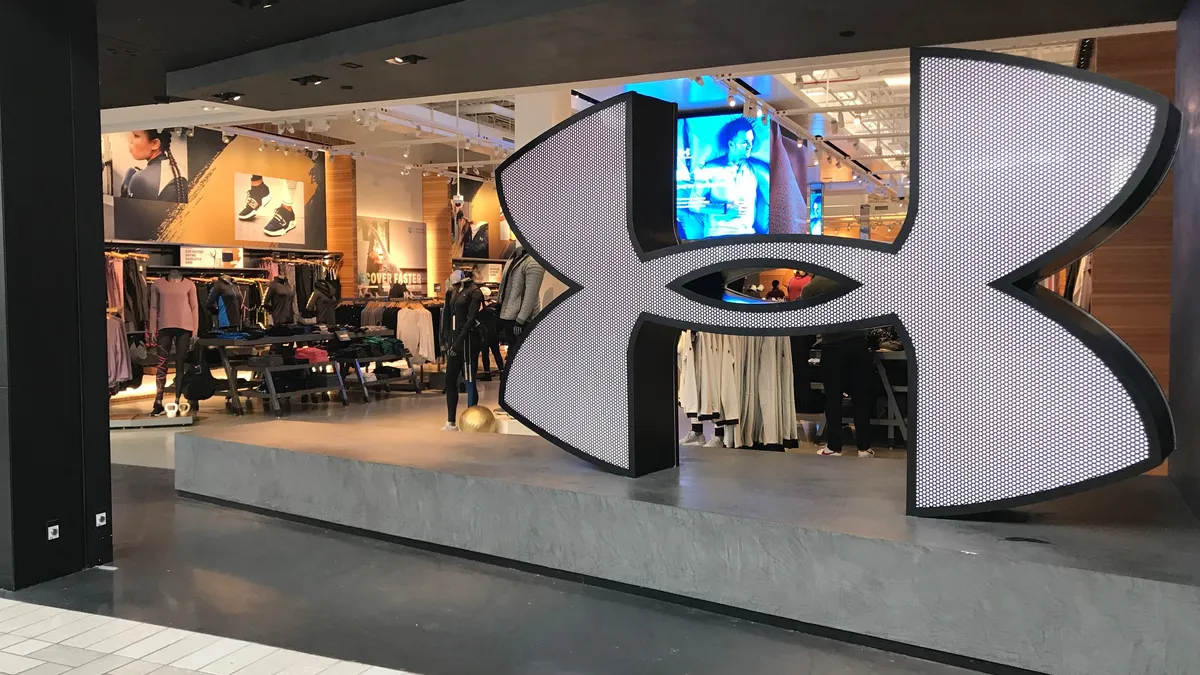Dive Brief:
- Under Armour has made headway in its efforts to bring inventory under control. In the period ending Sept. 30, inventories were up 6% year over year to $1.1 billion, compared to a 38% YoY increase in the previous period.
- The sportswear company expects inventory to fall below last year’s levels in the second two quarters of the current fiscal year, with anticipated declines in the mid-to-high teens, CFO David Bergman told analysts last week. “As our levels normalize, we feel very good about the quality and composition of the inventory we have on hand,” he added.
- As part of its inventory strategy, Under Armour has reduced the made-for-outlet products in its mix and has used its outlet store channel to move excess inventory in the business, making for a short-term drag on gross margin, according to Bergman.
Dive Insight:
Under Armour’s inventory woes have lasted longer than those of many other apparel sellers, including rivals like Nike. For that competitor, inventory fell by 10% in the previous period while Under Armour’s remained stubbornly elevated.
That has since improved. “We've been really excited about our progress on the inventory management strategies and what we have planned for the rest of the year,” Bergman said.
Strategies include selling through pack-and-hold inventory stowed away last year for future demand, as well as reducing factory buying in response to soft consumer demand, Bergman noted.
At the same time, “We've also been leveraging our outlet stores more than in the past, so doing more movement of our excess product through our outlets in a brand controlled way and less [made-for-outlet] through our outlets,” Bergman added.
Along with the reduced inventory, Under Armour profited from lower supply chain costs, mainly in freight, which amounted to a 4.1 percentage point benefit to its gross margin YoY. The company’s cost of goods sold fell more than 5% YoY in the quarter, and its operating margin was up 1.7 percentage points from the previous period.














